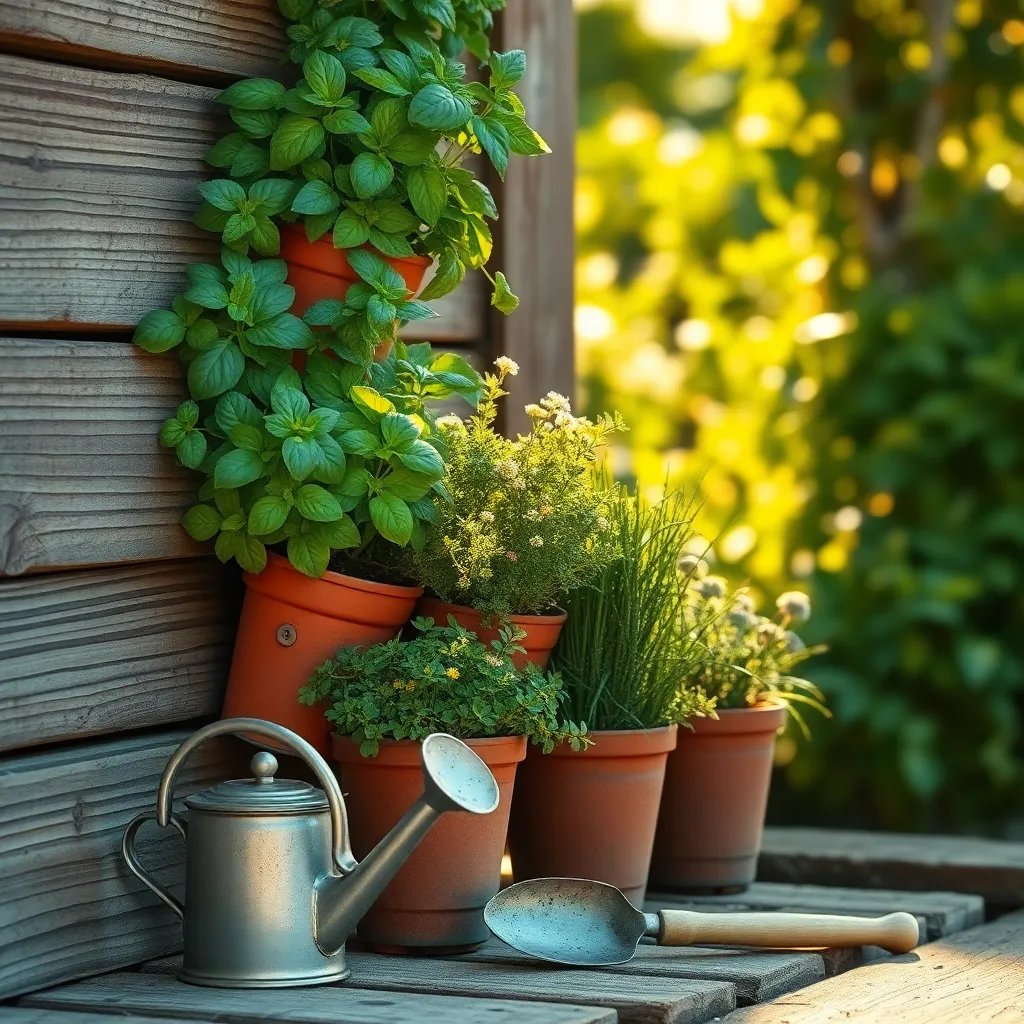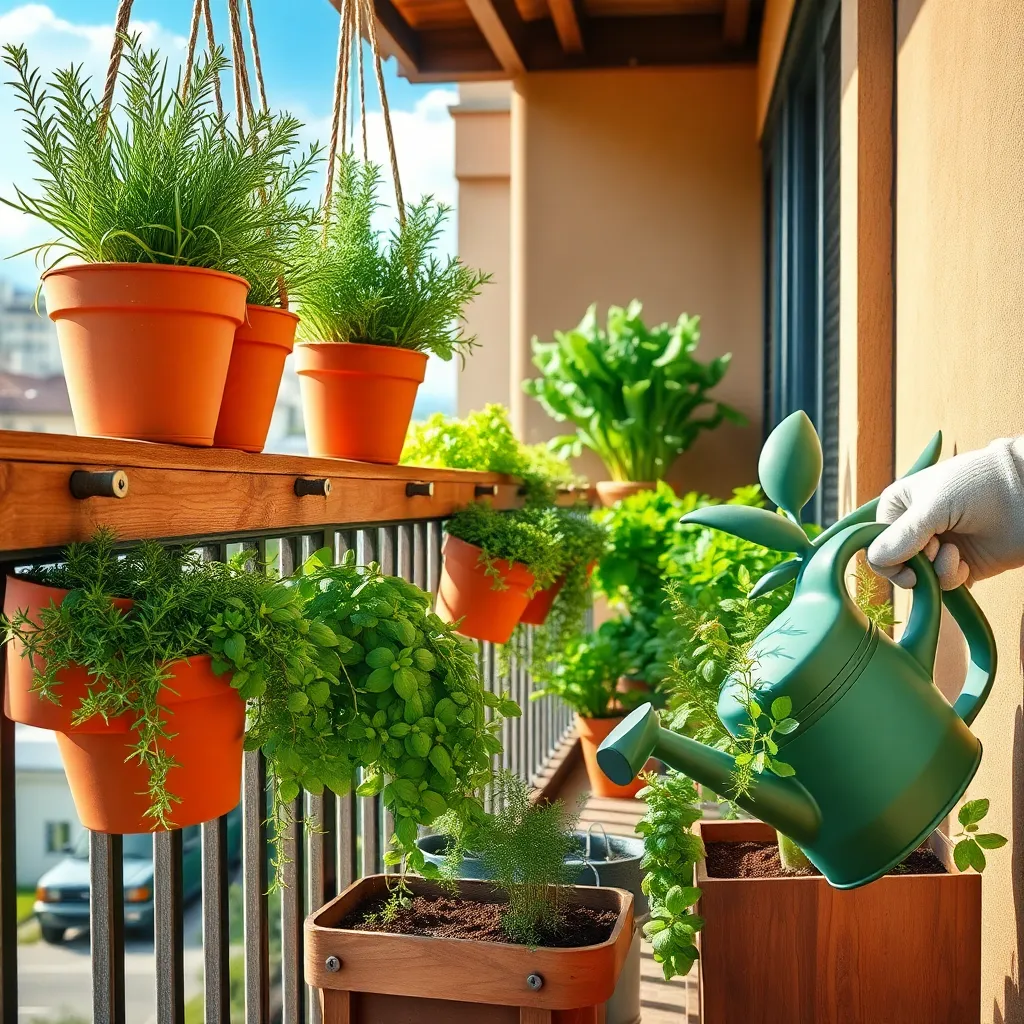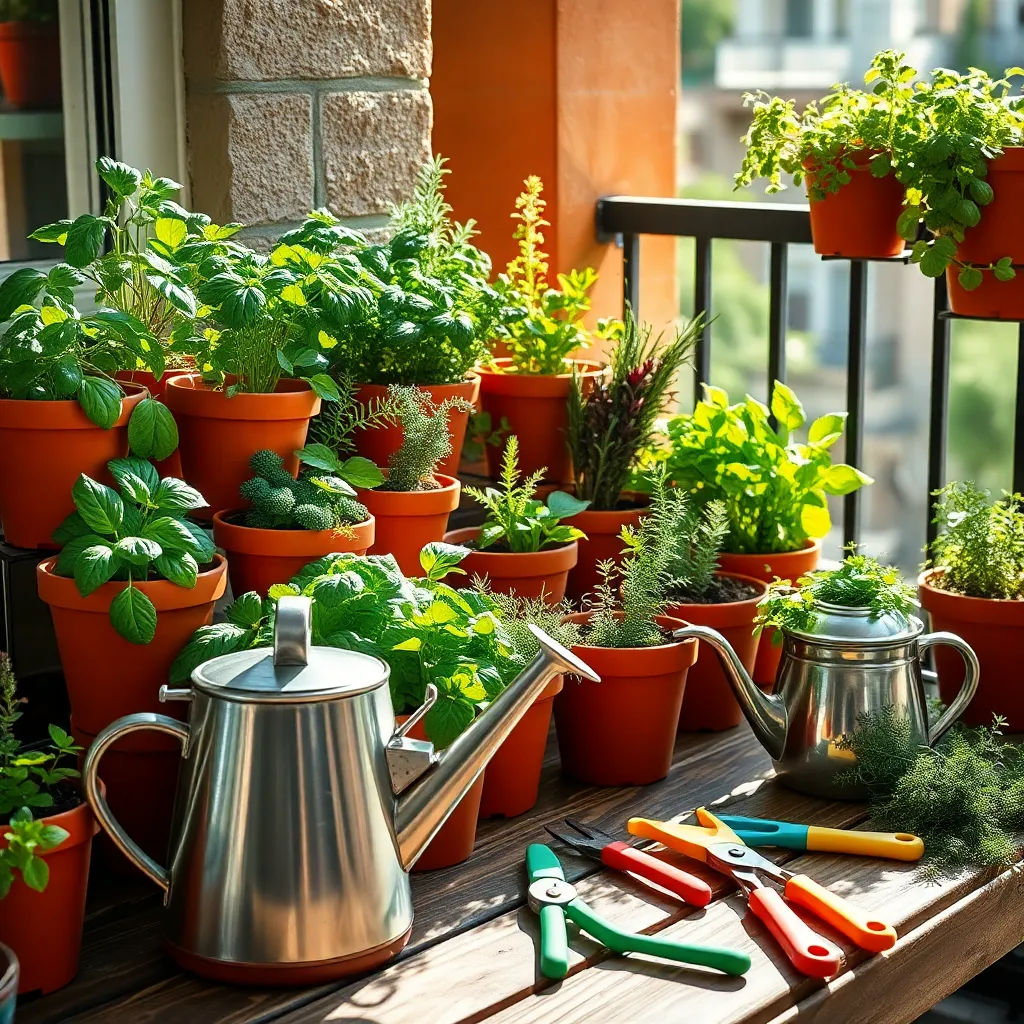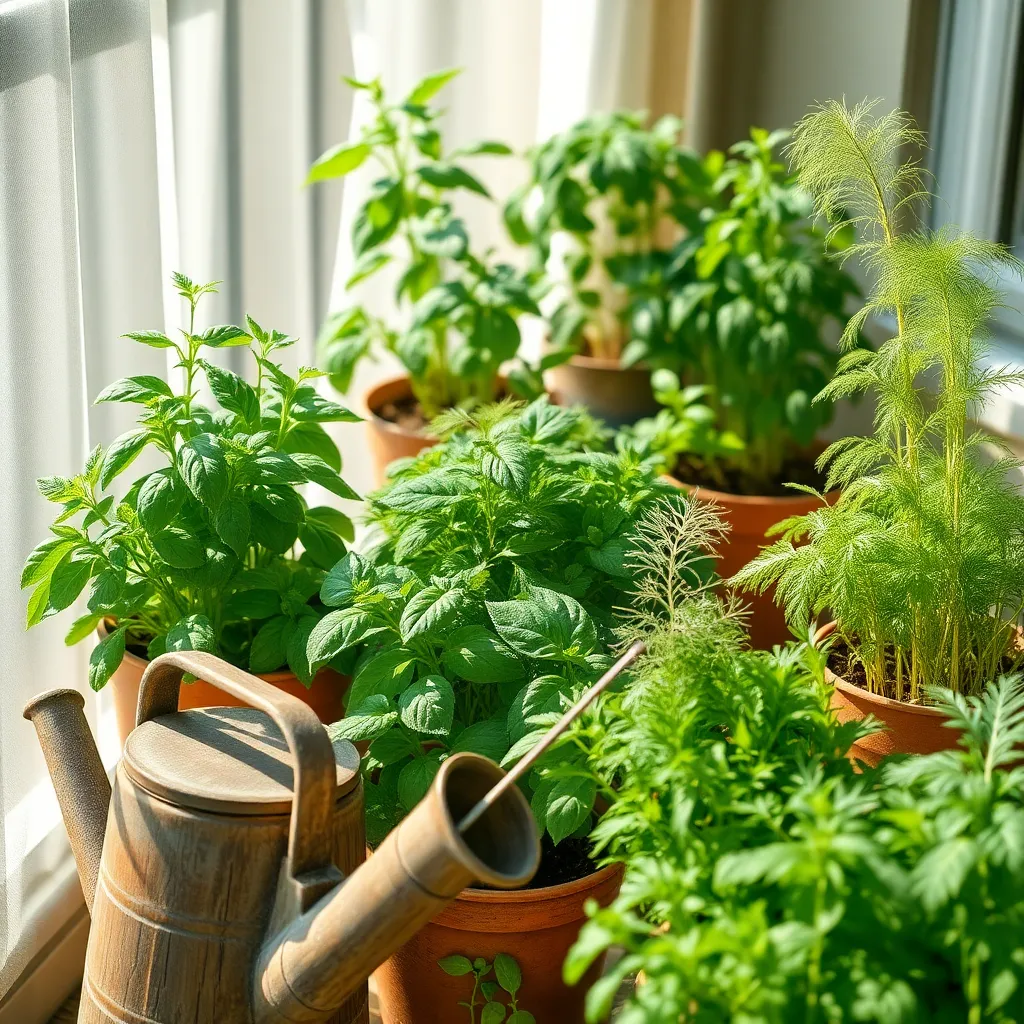In the heart of every kitchen lies the potential for a flourishing herb garden, even if you’re working with the tiniest of spaces. Whether you’re a seasoned gardener with a sprawling backyard or a city dweller with a petite balcony, cultivating your own herbs can transform your culinary creations and infuse your home with vibrant greenery. The world of small-space gardening opens up a delightful opportunity for both novices and green-thumbed aficionados to explore the magic of growing fresh herbs right at your fingertips.
Herbs are more than just a garnish; they’re a gateway to a sustainable lifestyle that begins with the simple act of planting a seed. In this guide, we will unravel the secrets to nurturing a thriving herb garden in small spaces, from choosing the right containers to selecting the most resilient varieties. You’ll discover tips and techniques to optimize your limited area, ensuring that every basil leaf and sprig of rosemary grows robustly, ready to elevate your dishes to new heights.
By the end of this article, you’ll be equipped with the knowledge to transform even the smallest nook into a lush, aromatic sanctuary. Together, we’ll explore the nuances of soil selection, lighting conditions, and creative space-saving strategies that ensure your herb garden flourishes. Whether you’re aiming to create a windowsill oasis or a compact balcony retreat, this journey into small-space herb gardening promises to be as rewarding as it is satisfying, inviting you to cultivate a deeper connection with nature.
Select Compact Herb Varieties

When gardening in small spaces, choosing compact herb varieties is crucial for maximizing your growing area. Basil ‘Spicy Globe’ is an excellent choice as it forms a neat, bushy plant that thrives in pots or small garden beds.
Another great option is ‘Dwarf Greek’ oregano, which offers the same robust flavor as regular oregano but in a smaller package. This variety prefers well-drained soil and can handle a bit of drought, making it low-maintenance for busy gardeners.
Consider growing ‘Fernleaf’ dill, which is perfect for containers due to its compact size and feathery foliage. It requires full sun and regular watering, but be careful not to overwater, as dill does not like soggy roots.
For those looking for a unique addition, ‘Small Wonder’ thyme is a compact variety with aromatic leaves perfect for culinary use. It thrives in sandy, well-drained soil and needs only moderate watering, making it ideal for small, sunny spots.
Choose Suitable Containers

Choosing the right containers is crucial for growing herbs in small spaces. Opt for containers that are at least 6-12 inches deep to give your herbs’ roots enough room to grow and thrive.
Materials matter when selecting your containers. Terracotta pots are excellent for herbs as they are porous and allow for better air circulation, but they can dry out faster than plastic or glazed pots.
Ensure your containers have adequate drainage holes. Proper drainage is essential to prevent waterlogged soil, which can lead to root rot and poor plant health.
For those with limited space, consider using vertical planters. Stackable or wall-mounted containers can maximize your growing area while keeping your herbs easily accessible for daily use.
Use Quality Potting Mix

After selecting the perfect containers for your herbs, the next crucial step is to use a quality potting mix. A good potting mix ensures proper drainage and provides essential nutrients for your herbs to thrive in small spaces.
It’s important to choose a mix that is lightweight and well-draining. This helps prevent waterlogged roots, which can lead to root rot—a common issue in container gardening.
Opt for a potting mix that includes a blend of materials like peat moss, perlite, and vermiculite. These ingredients improve aeration and moisture retention, creating an ideal environment for your herbs to grow vigorously.
For gardeners looking to enhance their potting mix, consider adding a slow-release fertilizer. This can provide a steady supply of nutrients over time, ensuring your herbs remain healthy and productive.
Remember to refresh your potting mix annually to maintain its effectiveness. Over time, the mix can compact and lose its structure, so replacing it helps sustain healthy plant growth.
Ensure Proper Sunlight Exposure

To ensure your herbs thrive in small spaces, it’s crucial to provide them with the proper sunlight exposure. Most herbs, such as basil, rosemary, and thyme, require at least six hours of direct sunlight daily for optimal growth.
Consider placing your herb containers in a south-facing window if indoors, or on a sunny balcony if outdoors. For those with limited natural light, using grow lights can effectively supplement the lighting needs of your herbs.
As a beginner, it’s helpful to note that herbs like mint and parsley can tolerate partial shade, making them suitable for less sunny spots. For more advanced gardeners, rotating your herb pots weekly can ensure even growth by exposing all sides to the sun.
Keep in mind that too much direct sunlight, especially in intense summer heat, can scorch your herbs. In such cases, consider using a sheer curtain or providing afternoon shade to protect your plants while still ensuring they receive enough light.
Implement Regular Watering Schedule

Establishing a regular watering schedule is essential for thriving herb gardens, especially in small spaces. Most herbs prefer soil that is consistently moist but not overly saturated, making it crucial to monitor moisture levels frequently.
To determine the right frequency, consider the specific needs of the herbs you are growing. For example, rosemary and thyme thrive in drier conditions, while basil and cilantro require more consistent moisture.
It’s beneficial to water your herbs in the morning when temperatures are cooler, reducing evaporation and helping the plants absorb moisture more effectively. Using a watering can with a narrow spout can help you target the base of the plants, minimizing wetting the foliage, which can lead to fungal issues.
For those looking to optimize their watering routine, consider investing in a moisture meter. This tool can give you a more accurate assessment of when your plants truly need water, preventing over or under-watering.
Conclusion: Growing Success with These Plants
In the journey of nurturing relationships, much like growing herbs in small spaces, the essentials include creating a nurturing environment, investing time and care, understanding each other’s needs, communicating openly, and being patient through growth phases. These five key concepts serve as a blueprint for cultivating a thriving partnership, even in the most confined or challenging circumstances.
To take immediate action, consider starting a “relationship garden” by setting aside time each week to focus solely on your partner’s needs and growth, just as you would tend to your herbs. This dedicated time can be a powerful catalyst for deeper connection and understanding.
As you embark on this enriching journey, don’t forget to save or bookmark this article for ongoing inspiration and guidance; having these insights at your fingertips can be invaluable in moments of uncertainty. Looking ahead, remember that with consistent effort and care, your relationship has the potential to flourish beautifully, much like a well-tended garden. Embrace the process with warmth and patience, and watch your relationship blossom into something truly remarkable.
